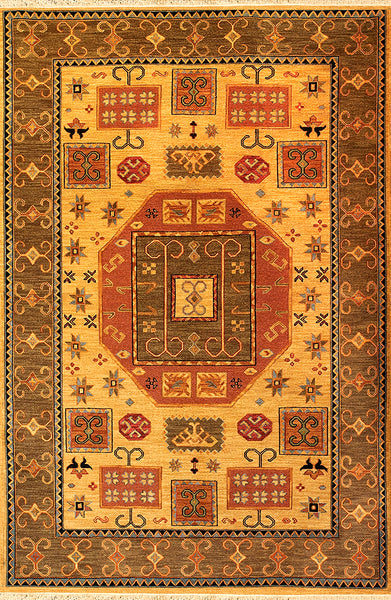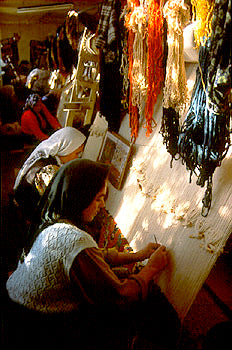The origin of oriental carpets has been attributed to the nomadic tribes originating in Central Asia. The earliest carpet, the famous Pazryk Carpet (seen below), which was

discovered in a Siberian burial site, is more than 2,500 years old (note how well the intricate design has held up - a tribute to the craft and construction of handmade rugs). It is generally accepted that the special craft was developed simultaneously in different parts of the world, probably around the same period of time and spread throughout the world by nomadic tribes. Since then, carpet weaving has been a mainstay in countries such as Persia (Iran), Egypt, Turkey, China, Pakistan, and India, and in more recent times Tibet and Nepal.
Carpet weaving was a craft of many nomadic tribes and developed because of the need for protection from the elements. The Kazak design (seen below - our Kazak design 5), is a

perfect example of the nomadic styles of past and present. The geometric designs were easily woven by nomads who migrated throughout the world. Most were woven on horizontal looms that could be easily taken up when the tribes moved from one place to another. A high level of detail that can be achieved with fine yarns and an upright stationary loom. The striated colorations of the tribal rugs also denote the different dyes and wool used as they moved from one place to another and produced the wools and dyes, as they were needed.
The Tabriz, as well as Sarouk, Keshan, Bidjar, Herati and others are designs that are depicted by the actual city where they originated from. So-called "city"rugs, these works of art show exquisite detail due to the fine knotting and quality-controlled materials.
The rugs from each country, and even each region of a country, often have their own unique characteristics of construction and design, which help in their identification. However, in modern times many of these characteristics have been "hybridized" because of the movements of refugee weavers and because many of the Persian designs are being made in other countries such as India and Pakistan with innovations and colors that may not have been used traditionally.
This informative Wikipedia reference on Persian carpet has more on the Pazryk Carpet, as well as history on other rug making periods, materials, designs, and motifs.






